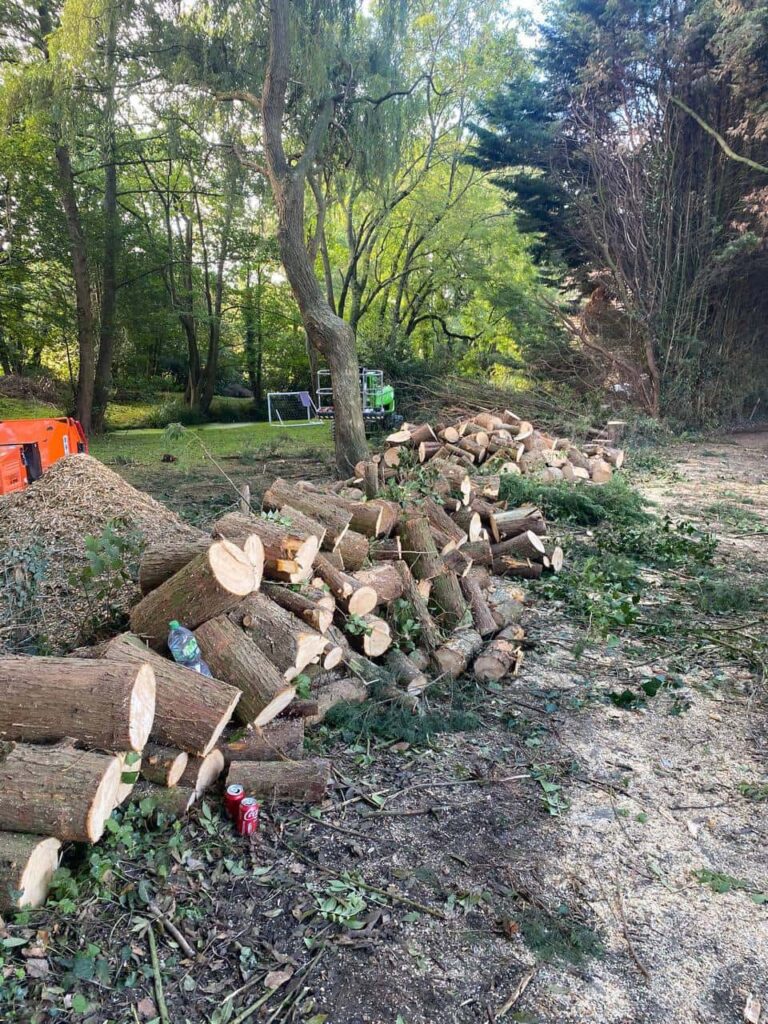Introduction: At Lakenheath Tree Surgeons, we understand that a well-maintained hedge can highlight your garden, providing structure, privacy, and beauty. However, when a hedge is addressed, it can become overgrown, unruly, and retain its charm. Reviving a neglected hedge requires a thoughtful approach to cutting and care. Here’s a comprehensive guide to help you restore your hedge to its former glory.
1. Assess the Current State of the Hedge
Before starting any cutting, evaluate the condition of your hedge:
- Health Check: Inspect for signs of disease, pest infestations, or damage. Look for discoloured leaves, dead branches, or unusual growth patterns.
- Shape and Size: Determine the amount of overgrowth that needs to be addressed and the shape you want to achieve. Consider how the hedge will fit into your overall garden design.
2. Gather the Right Tools
For effective and safe cutting, ensure you have the following tools:
- Pruning Shears: Ideal for cutting small branches and shaping.
- Loppers: Useful for thicker branches that are too large for shears.
- Hedge Trimmers: For larger, more uniform cuts. Opt for electric or petrol trimmers for extensive hedges.
- Safety Gear: Wear gloves, safety glasses, and appropriate clothing to protect yourself from debris and sharp branches.
3. Timing Is Key
The timing of your hedge cutting can impact its recovery:
- Best Seasons: Late winter to early spring is ideal for most hedges. This is before new growth begins but after the risk of severe frost has passed.
- Avoid Peak Growing Season: Cutting during peak growing seasons (spring and summer) can stress the plant and lead to uneven growth.
4. Cutting Techniques
Proper cutting techniques are crucial for revitalising a neglected hedge:
- Remove Dead and Diseased Wood: Start trimming away any dead, diseased, or damaged branches. This helps improve air circulation and prevents disease spread.
- Shape Gradually: Remove only a third of the foliage per session for heavily overgrown hedges. This gradual approach prevents shock and encourages healthy regrowth.
- Taper the Top: Trim the top of the hedge to be slightly narrower than the base. This allows sunlight to reach the lower parts of the hedge, promoting even growth.
5. Post-Cutting Care
Once you’ve cut your hedge, proper care is essential for its recovery:
- Watering: Ensure the hedge receives adequate water, especially during dry spells. Deep watering encourages strong root growth.
- Feeding: Apply a balanced fertiliser to support new growth. Follow the manufacturer’s instructions for application rates and timing.
- Mulching: To retain moisture and suppress weeds, add a layer of mulch around the base of the hedge. Organic mulch, such as wood chips or compost, is ideal.
6. Ongoing Maintenance
Prevent future neglect with regular maintenance:
- Regular Trimming: Schedule regular trimming sessions to keep the hedge in shape and prevent overgrowth. Trimming twice a year—once in late spring and again in late summer—works well for most hedges.
- Monitor Health: Watch your hedge for signs of pest or disease issues. Early detection and treatment are key to maintaining a healthy hedge.
7. Professional Help
If your hedge is severely neglected or you’re unsure about cutting techniques, consider professional help:
- Expert Assessment: A tree surgeon can thoroughly assess and recommend the best approach for revitalising your hedge.
- Specialised Equipment: Professionals have access to advanced tools and equipment that can make the job more efficient and effective.
Conclusion: Reviving a neglected hedge takes time, patience, and the right techniques. Following these guidelines, you can restore your hedge to its former beauty and ensure it remains vibrant in your garden.
Call us on: 01842 771 096
Click here to find out more about Lakenheath Tree Surgeons
Click here to complete our contact form and see how we can help you with your tree’s needs.

